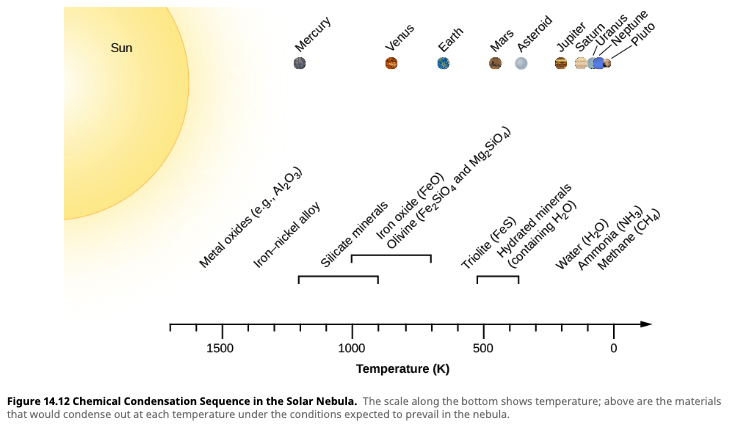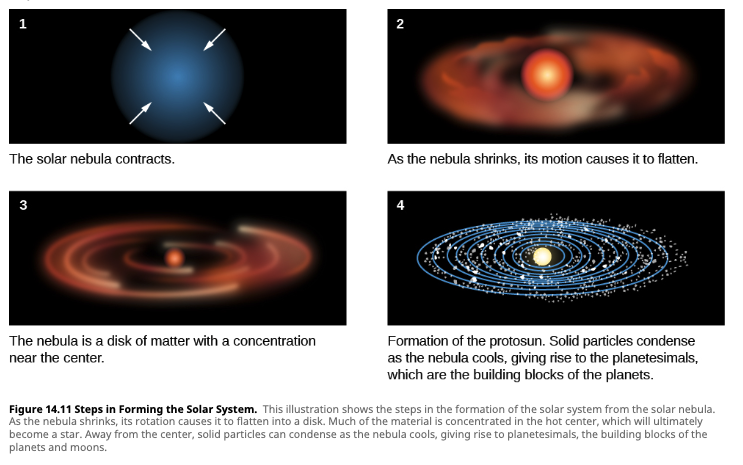The Solar System


- Our local solar system
- Planets
- Terrestrial planets
- Jovian planets
- Our week has 7 days because there are 7 observable moving objects in the sky
- Our month is based on how long the Moon takes to complete a trip around the sky
- Moonth
- Traveling at 230 km/s
- The nearest star to us is Proxima Centauri
- Objects in the solar system formed ~4.5 billion years ago

Mass of Members
- Masses of planets originally measured using Johannes Kepler's laws of planetary motion
| Object | Percentage of Total Mass of Solar System |
|---|---|
| Sun | 99.80% |
| Jupiter | 0.10% |
| Comets | approx. 0.0005-0.03% |
| All other planets and dwarf planets | 0.04% |
| Moons and rings | 0.00005% |
| Asteroids | approx. 0.000002% |
| Cosmic dust | approx. 0.0000001% |
Characteristics
- Orderly motion
- Nearly circular orbits in the same plane
- Everything is moving counter clockwise
- Almost all spinning counter clockwise
- Asteroids and comets
- Exceptions
Formation
- Took ~100 million years
- We have the rules
- Johannes Kepler's laws
- Isaac Newton's Laws of Motion
- Forces and interactions
- Gravity
- Angular momentum (Kepler's second law)
- Particles heating up, moving faster, bumping into one another
- Can learn about formation by looking at patterns
- Planet composition
- Spectroscopic analysis --> which elements are present
- Sun, Jupiter, Saturn --> similar elements
- Hydrogen-dominated composition
- Terrestrial planets and the Moon --> similar elements
- Deficient in light gases and various ices that form from elements like oxygen, carbon, and nitrogen
- Rarer heavy elements
- Inner planets are made of elements that can survive heat
- Outer solar system is much cooler so ice/gas can exist
- Planets must form before materials get blown into outer space by solar wind
- ISM --> interstellar medium
Steps

- Start with a blob or cloud of gas and dust
- Must have rotation
- Begins to contract because of its own gravity
- Or could have been hit by a shockwave
- Proto-sun forms
- Disk flattens and rotates faster
- Accretion disk
- Rotation slows collapse in the plane of rotation forming a disk
- Smaller particles run into larger particles forming larger and large chunks
- Planetesimals
- Disk also heats up through gravitational contraction
- Up to hundreds of Kelvin
- Material near the centre is moving faster so temperature --> higher
- Accretion disk
- Sun turns 'on'
- Starts shining
- Removes gases from inner areas --> leaving dust and debris
- Gas planets can form farther Outer